 Medical research has found many compelling advantages to breastfeeding, not only for infants, but for mothers as well. According to the American Academy of Pediatrics, the advantages include nutritional, immunologic, developmental, psychological, social, economic, and environmental benefits. This 2-page Family Album Radio transcript was written by Donna Davis, and published by the UF Department of Family Youth and Community Sciences, February 2013.
Medical research has found many compelling advantages to breastfeeding, not only for infants, but for mothers as well. According to the American Academy of Pediatrics, the advantages include nutritional, immunologic, developmental, psychological, social, economic, and environmental benefits. This 2-page Family Album Radio transcript was written by Donna Davis, and published by the UF Department of Family Youth and Community Sciences, February 2013.
http://edis.ifas.ufl.edu/fm011
Category: Children
Save a Child: How to Identify and Report Child Abuse (FCS2119/HE855)
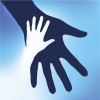 People who work with children, parents, and the general public may at some point in their lives and careers have to report child abuse. It is important that you be able to recognize the symptoms of abuse and be able to contact the appropriate authorities. By reporting abuse, you may save a child’s life or prevent serious injury. This 4-page fact sheet discusses child abuse laws and procedures for reporting abuse. It also contains information about different types of abuse and how to identify abused or neglected children. Characteristics listed here are general and intended as guidelines. A child or family may exhibit many warning signs of abuse, though no abuse has occurred or ever will occur. Written by Andrew E. Toelle and Kate Fogarty, and published by the UF Department of Family Youth and Community Sciences, January 2013.
People who work with children, parents, and the general public may at some point in their lives and careers have to report child abuse. It is important that you be able to recognize the symptoms of abuse and be able to contact the appropriate authorities. By reporting abuse, you may save a child’s life or prevent serious injury. This 4-page fact sheet discusses child abuse laws and procedures for reporting abuse. It also contains information about different types of abuse and how to identify abused or neglected children. Characteristics listed here are general and intended as guidelines. A child or family may exhibit many warning signs of abuse, though no abuse has occurred or ever will occur. Written by Andrew E. Toelle and Kate Fogarty, and published by the UF Department of Family Youth and Community Sciences, January 2013.
http://edis.ifas.ufl.edu/he855
What Middle Schoolers Want to Talk About (FAR0804/FM246)
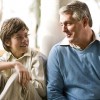 “Can your middle-schooler talk to you? Most 10- to 14-year-olds want a warm, close relationship with their parents. However, only about a quarter of adolescents nationwide find their parents ‘approachable and available to talk.'” This 2-page Family Album Radio transcript was written by Suzanna Smith, and published by the UF Department of Family Youth and Community Sciences, September 2012.
“Can your middle-schooler talk to you? Most 10- to 14-year-olds want a warm, close relationship with their parents. However, only about a quarter of adolescents nationwide find their parents ‘approachable and available to talk.'” This 2-page Family Album Radio transcript was written by Suzanna Smith, and published by the UF Department of Family Youth and Community Sciences, September 2012.
http://edis.ifas.ufl.edu/fm246
Talking to Children about Disasters (FAR8038/FM248)
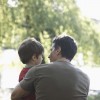 “Natural disasters, refugees displaced from their homes, loss of life . . . even for adults, these tragic events are difficult to understand. Children, too, may find these incidents especially troubling. Adults can help young people make sense of disasters and deal with their feelings by following a few guidelines.” This 2-page Family Album Radio transcript was written by Suzanna Smith, and published by the UF Department of Family Youth and Community Sciences, September 2012.
“Natural disasters, refugees displaced from their homes, loss of life . . . even for adults, these tragic events are difficult to understand. Children, too, may find these incidents especially troubling. Adults can help young people make sense of disasters and deal with their feelings by following a few guidelines.” This 2-page Family Album Radio transcript was written by Suzanna Smith, and published by the UF Department of Family Youth and Community Sciences, September 2012.
http://edis.ifas.ufl.edu/fm248
Protecting Your Family from Unintentional Poisoning (FAR5002/FM366)
 “In 2004, more than 2.4 million exposures to human toxins were reported to poison control centers in the United States. Almost all of them occurred in homes, and 85% percent of poison exposures were unintentional. More than half of them involved children under six years old. As a parent, that is a very frightening statistic.” This 2-page Family Album Radio transcript was written by Donna Davis, and published by the UF Department of Family Youth and Community Sciences, August 2012.
“In 2004, more than 2.4 million exposures to human toxins were reported to poison control centers in the United States. Almost all of them occurred in homes, and 85% percent of poison exposures were unintentional. More than half of them involved children under six years old. As a parent, that is a very frightening statistic.” This 2-page Family Album Radio transcript was written by Donna Davis, and published by the UF Department of Family Youth and Community Sciences, August 2012.
http://edis.ifas.ufl.edu/fm366
Enviroshopping for Teens (FCS8756/FY342)
 Every day, we make choices that impact our environment. This 3-page fact sheet will help you make environmentally friendly choices whenever you make purchases and encourage you to take a second look at items before throwing them away. Written by Linda B. Bobroff and R. Elaine Turner, and published by the UF Department of Family Youth and Community Sciences, September 2012.
Every day, we make choices that impact our environment. This 3-page fact sheet will help you make environmentally friendly choices whenever you make purchases and encourage you to take a second look at items before throwing them away. Written by Linda B. Bobroff and R. Elaine Turner, and published by the UF Department of Family Youth and Community Sciences, September 2012.
http://edis.ifas.ufl.edu/fy342
Teen Binge Drinking (FAR1201/FM362)
 “Raising teenagers is a tough job. I know I’m not the only mom who worries about the challenges our children face, including the issue of teenage drinking. There are many reasons to be concerned: Youth who use alcohol are at greater risk for unprotected sexual intercourse, coerced sexual activity, use of marijuana, and poor academic performance.” This 2-page Family Album Radio transcript was written by Suzanna Smith and published by the UF Department of Family Youth and Community Sciences, August 2012.
“Raising teenagers is a tough job. I know I’m not the only mom who worries about the challenges our children face, including the issue of teenage drinking. There are many reasons to be concerned: Youth who use alcohol are at greater risk for unprotected sexual intercourse, coerced sexual activity, use of marijuana, and poor academic performance.” This 2-page Family Album Radio transcript was written by Suzanna Smith and published by the UF Department of Family Youth and Community Sciences, August 2012.
http://edis.ifas.ufl.edu/fm362
Child-Proofing Your Yard (FAR5043/FM323)
 “Once your child first pulls himself or herself onto two feet, normal housekeeping rules fly out the window as every parent makes child-proofing a high priority. These precautions become even more elaborate as the child becomes more mobile and more creative. But experts at the University of Florida point out that a backyard poses just as many hazards—but hazards of a different sort than a home.” This 2-page Family Album Radio transcript was written by Patricia Bartlett and Suzanna Smith, and published by the UF Department of Family Youth and Community Sciences, August 2012.
“Once your child first pulls himself or herself onto two feet, normal housekeeping rules fly out the window as every parent makes child-proofing a high priority. These precautions become even more elaborate as the child becomes more mobile and more creative. But experts at the University of Florida point out that a backyard poses just as many hazards—but hazards of a different sort than a home.” This 2-page Family Album Radio transcript was written by Patricia Bartlett and Suzanna Smith, and published by the UF Department of Family Youth and Community Sciences, August 2012.
http://edis.ifas.ufl.edu/fm323
Adolescent TV Use (FAR1206/FM401)
 “More than likely you’ve commonly heard the most recent generations referred to as Generation X and now Generation Y. However, in a new report from the Kaiser Family Foundation, researchers renamed this younger group as “Generation M” to stand for media influence in their lives. Indeed, there are days that I wonder if my children can unplug from the many digital and electronic devices in their lives.” This 2-page Family Album Radio transcript was written by Donna Davis and published by the UF Department of Family Youth and Community Sciences, August 2012.
“More than likely you’ve commonly heard the most recent generations referred to as Generation X and now Generation Y. However, in a new report from the Kaiser Family Foundation, researchers renamed this younger group as “Generation M” to stand for media influence in their lives. Indeed, there are days that I wonder if my children can unplug from the many digital and electronic devices in their lives.” This 2-page Family Album Radio transcript was written by Donna Davis and published by the UF Department of Family Youth and Community Sciences, August 2012.
http://edis.ifas.ufl.edu/fm401
Factors of Adolescent Suicide (FAR1203/FM385)
 “The loss of a child to suicide can be particularly devastating to parents, friends, and others in the child’s life. When my daughter came home one day telling me of a classmate who was contemplating suicide, the flood of fear for her friend and for the fact that my daughter was so closely exposed to such pain was one of those life-stopping moments.” This 2-page Family Album Radio transcript was written by Donna Davis, and published by the UF Department of Family Youth and Community Sciences, August 2012.
“The loss of a child to suicide can be particularly devastating to parents, friends, and others in the child’s life. When my daughter came home one day telling me of a classmate who was contemplating suicide, the flood of fear for her friend and for the fact that my daughter was so closely exposed to such pain was one of those life-stopping moments.” This 2-page Family Album Radio transcript was written by Donna Davis, and published by the UF Department of Family Youth and Community Sciences, August 2012.
http://edis.ifas.ufl.edu/fm385
Television and Babies' Sleep (FAR0426/FM395)
 “There are a number of video and television programs that have been made for children under the age of three. At times it may be fun to watch your baby or toddler bounce or dance along with the characters on the screen. Many busy caregivers also use these shows to give themselves a little time for a needed break or to prepare a meal or tidy up. However, watching television may not be best for your baby or toddler’s sleep.” This 2-page Family Album Radio transcript was written by Kristen McDanel and Suzanna Smith, and published by the UF Department of Family Youth and Community Sciences, August 2012.
“There are a number of video and television programs that have been made for children under the age of three. At times it may be fun to watch your baby or toddler bounce or dance along with the characters on the screen. Many busy caregivers also use these shows to give themselves a little time for a needed break or to prepare a meal or tidy up. However, watching television may not be best for your baby or toddler’s sleep.” This 2-page Family Album Radio transcript was written by Kristen McDanel and Suzanna Smith, and published by the UF Department of Family Youth and Community Sciences, August 2012.
http://edis.ifas.ufl.edu/fm395
Teen Relationship Abuse Research Study (FAR1205/FM400)
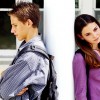 “When we think of violence between intimate partners, we often think of domestic abuse between adult men and women, and most often between husbands and wives. However, in a recent study commissioned by Liz Claiborne Inc., researchers discovered deep and troubling evidence that today’s teens are not only experiencing dating violence, but are accepting it as normal.” This 2-page Family Album Radio transcript was written by Donna Davis, and published by the UF Department of Family Youth and Community Sciences, August 2012.
“When we think of violence between intimate partners, we often think of domestic abuse between adult men and women, and most often between husbands and wives. However, in a recent study commissioned by Liz Claiborne Inc., researchers discovered deep and troubling evidence that today’s teens are not only experiencing dating violence, but are accepting it as normal.” This 2-page Family Album Radio transcript was written by Donna Davis, and published by the UF Department of Family Youth and Community Sciences, August 2012.
http://edis.ifas.ufl.edu/fm400
Adolescent Bullying and Family Therapy (FAR1204/FM399)
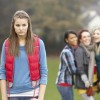 “As much as parents like to think that bullying is something that’s outgrown in childhood, unfortunately it’s actually on the increase in adolescence. There are various individual and school-based approaches to dealing with bullying, but a new intervention that you might find surprising is none other than family therapy. ” This 2-page Family Album Radio transcript was written by Kate Fogarty, and published by the UF Department of Family Youth and Community Sciences, August 2012.
“As much as parents like to think that bullying is something that’s outgrown in childhood, unfortunately it’s actually on the increase in adolescence. There are various individual and school-based approaches to dealing with bullying, but a new intervention that you might find surprising is none other than family therapy. ” This 2-page Family Album Radio transcript was written by Kate Fogarty, and published by the UF Department of Family Youth and Community Sciences, August 2012.
http://edis.ifas.ufl.edu/fm399
Cyberbullying (FAR1713/FM398)
 “Bullying, or aggression on a continual basis between peers where one has a power advantage over another—is common among children and adolescents. Using intimidation and physical force or spreading rumors is often what comes to mind when we think of bullying. However, a form that parents and teachers may be less aware of is called “cyberbullying.” This involves put-downs, publicly sharing personal information, stalking, and other overt attacks upon a person, all using electronic communication.” This 2-page Family Album Radio transcript was written by Kate Fogarty and published by the UF Department of Family Youth and Community Sciences, August 2012.
“Bullying, or aggression on a continual basis between peers where one has a power advantage over another—is common among children and adolescents. Using intimidation and physical force or spreading rumors is often what comes to mind when we think of bullying. However, a form that parents and teachers may be less aware of is called “cyberbullying.” This involves put-downs, publicly sharing personal information, stalking, and other overt attacks upon a person, all using electronic communication.” This 2-page Family Album Radio transcript was written by Kate Fogarty and published by the UF Department of Family Youth and Community Sciences, August 2012.
http://edis.ifas.ufl.edu/fm398
Parents' Spending on Teens (FAR1209/FM421)
 “In a recent study from Teenage Research Unlimited, researchers reported that teens spent $159 billion in 2005. My own experience raising three teens led me to believe that many of them spent their parents’ money in 2005.” This 2-page Family Album Radio transcript was written by Donna Davis, and published by the UF Department of Family Youth and Community Sciences, July 2012.
“In a recent study from Teenage Research Unlimited, researchers reported that teens spent $159 billion in 2005. My own experience raising three teens led me to believe that many of them spent their parents’ money in 2005.” This 2-page Family Album Radio transcript was written by Donna Davis, and published by the UF Department of Family Youth and Community Sciences, July 2012.
http://edis.ifas.ufl.edu/fm421
Teen Birth Rates Decline (FAR1208/FM420)
 “Parents and others who are concerned about teenagers having babies have reason to celebrate. According to the nonprofit research organization Child Trends, the teenage birth rate for 15-19 year olds is at the lowest point in over 40 years. This drop began in 1991 and has roceeded steadily so that it is now one-third lower than the 1991 peak. The other good news is that it continues to fall.” This 2-page Family Album Radio transcript was written by Suzanna Smith, and published by the UF Department of Family Youth and Community Sciences, July 2012.
“Parents and others who are concerned about teenagers having babies have reason to celebrate. According to the nonprofit research organization Child Trends, the teenage birth rate for 15-19 year olds is at the lowest point in over 40 years. This drop began in 1991 and has roceeded steadily so that it is now one-third lower than the 1991 peak. The other good news is that it continues to fall.” This 2-page Family Album Radio transcript was written by Suzanna Smith, and published by the UF Department of Family Youth and Community Sciences, July 2012.
http://edis.ifas.ufl.edu/fm420
Helping Your Child Adjust to Child Care: Child Care 3 (FAR0309/FM419)
 “Almost 13 million of the 18 million children younger than five years of age in the U.S. are in some form of regular childcare (Overturf Johnson, 2002). This means that millions of parents are finding ways to help their children adjust to being away from Mom or Dad and get used to a new routine and situation. Child development experts recommend a number of strategies, particularly in the early weeks of care.” This 2-page Family Album Radio transcript was written by Suzanna Smith, and published by the UF Department of Family Youth and Community Sciences, July 2012.
“Almost 13 million of the 18 million children younger than five years of age in the U.S. are in some form of regular childcare (Overturf Johnson, 2002). This means that millions of parents are finding ways to help their children adjust to being away from Mom or Dad and get used to a new routine and situation. Child development experts recommend a number of strategies, particularly in the early weeks of care.” This 2-page Family Album Radio transcript was written by Suzanna Smith, and published by the UF Department of Family Youth and Community Sciences, July 2012.
http://edis.ifas.ufl.edu/fm419
Starting Child Care: Child Care 2 (FAR0308/FM418)
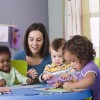 “Many parents have suffered the heart-wrenching moment of dropping their baby at a new child care setting, only to have them cling and cry. If your child is starting child care, you can help make the transition easier by following a few guidelines from child development experts to help you and your child prepare for this change” This 2-page Family Album Radio transcript was written by Suzanna Smith, and published by the UF Department of Family Youth and Community Sciences, July 2012.
“Many parents have suffered the heart-wrenching moment of dropping their baby at a new child care setting, only to have them cling and cry. If your child is starting child care, you can help make the transition easier by following a few guidelines from child development experts to help you and your child prepare for this change” This 2-page Family Album Radio transcript was written by Suzanna Smith, and published by the UF Department of Family Youth and Community Sciences, July 2012.
http://edis.ifas.ufl.edu/fm418
Playing It Safe with Play Equipment (FAR0086/FM415)
 “Raising my rough-and-tumble children at times took superhuman energy, patience, and constant supervision. Even the joyful vision of a playground could be daunting when the swing was used as a human slingshot and the slide had 101 uses, of which only one was acceptable. I’m sure many parents can relate to the fear of the unknown dangers on the playground.” This 2-page Family Album Radio transcript was written by Donna Davis, and published by the UF Department of Family Youth and Community Sciences, July 2012.
“Raising my rough-and-tumble children at times took superhuman energy, patience, and constant supervision. Even the joyful vision of a playground could be daunting when the swing was used as a human slingshot and the slide had 101 uses, of which only one was acceptable. I’m sure many parents can relate to the fear of the unknown dangers on the playground.” This 2-page Family Album Radio transcript was written by Donna Davis, and published by the UF Department of Family Youth and Community Sciences, July 2012.
http://edis.ifas.ufl.edu/fm415
Sun Protection for Your Children (FAR0084/FM412)
 “My children were all born during the summer months, and as we gradually spent more and more time outside, I wondered how best to protect them from the hot summer sun.” This 2-page Family Album Radio transcript was written by Suzanna Smith, and published by the UF Department of Family Youth and Community Sciences, July 2012.
“My children were all born during the summer months, and as we gradually spent more and more time outside, I wondered how best to protect them from the hot summer sun.” This 2-page Family Album Radio transcript was written by Suzanna Smith, and published by the UF Department of Family Youth and Community Sciences, July 2012.
http://edis.ifas.ufl.edu/fm412